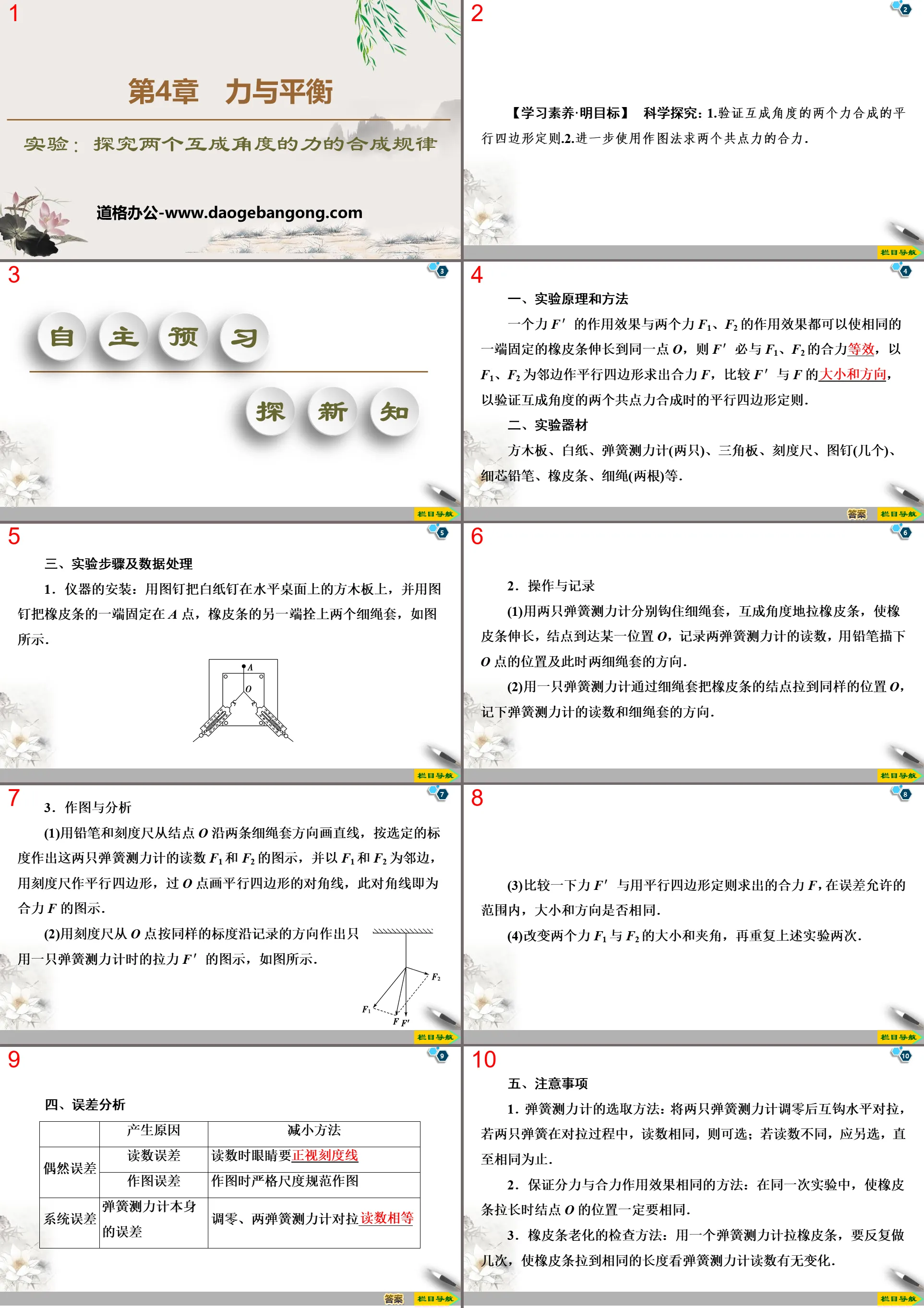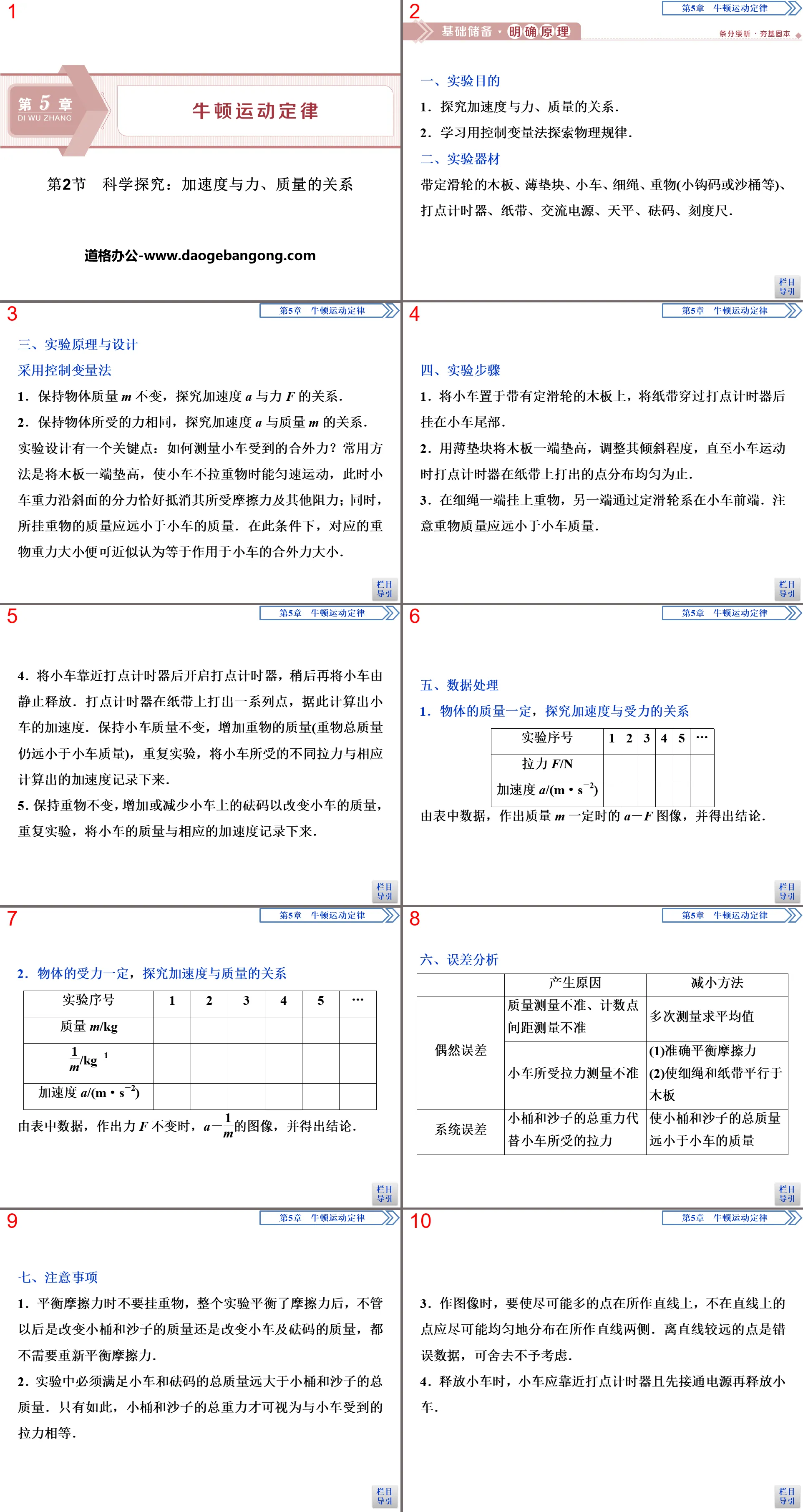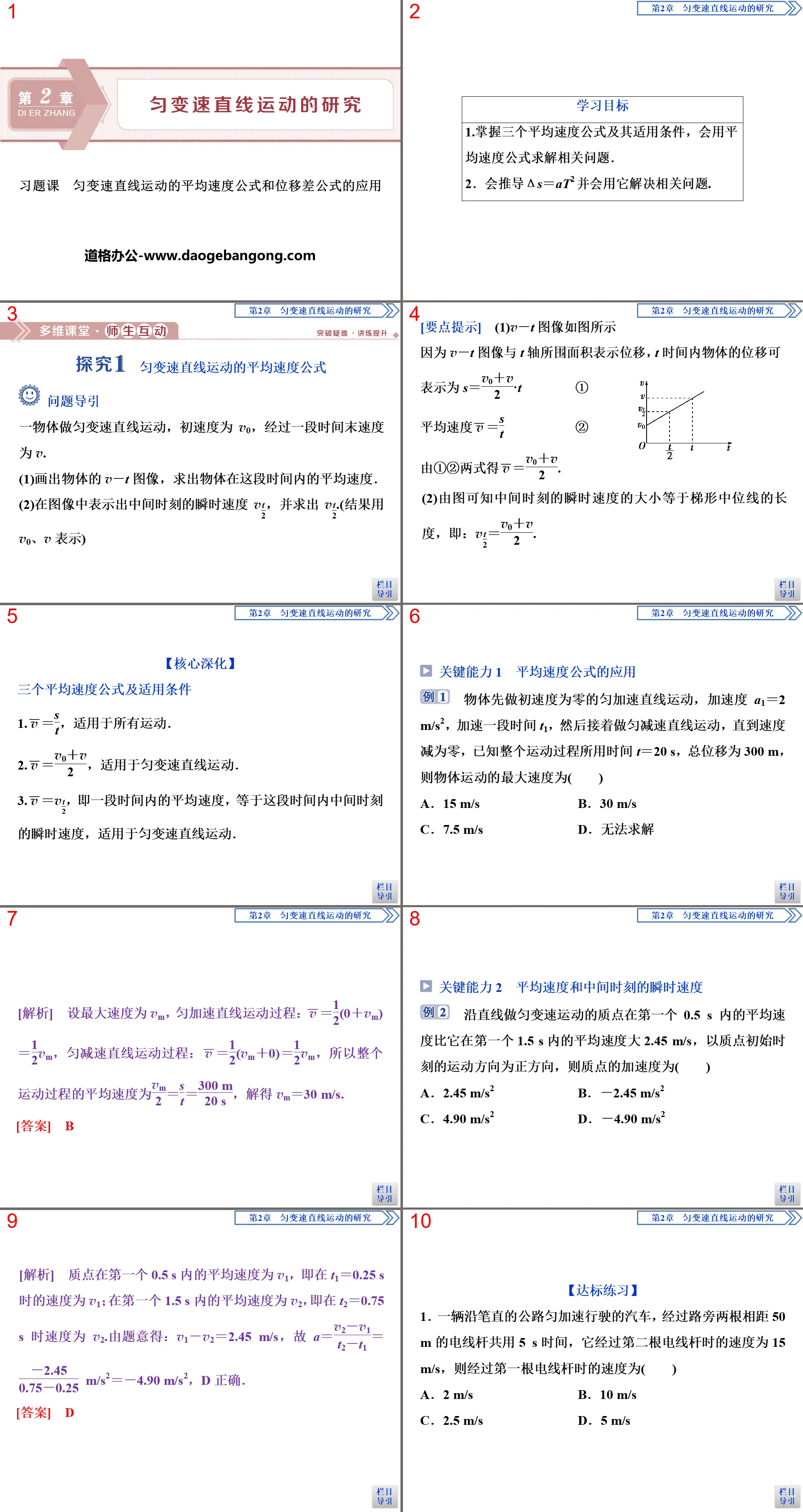"Application of the Average Speed Formula and Displacement Difference Formula of Uniformly Variable Speed Linear Motion" Research on Uniformly Variable Speed Linear Motion PPT Simple campus recruitment activity planning plan summary enterprise and institution recruitment publicity lecture PPT template is a general PPT template for business post competition provided by the manuscript PPT, simple campus recruitment activity planning plan summary enterprise and institution recruitment promotion Lecture PPT template, you can edit and modify the text and pictures in the source file by downloading the source file. If you want more exquisite business PPT templates, you can come to grid resource. Doug resource PPT, massive PPT template slide material download, we only make high-quality PPT templates!
| 文件名 如何下载使用 | 下载次数 | Download Points | 下载地址 |
|---|---|---|---|
| "Application of the Aver... | 18475次 | 0.00 | Free Download |
Tips: If you open the template and feel that it is not suitable for all your needs, you can search for related content "Application of the Average Speed Formula and Displacement Difference Formula of Uniformly Variable Speed Linear Motion" Research on Uniformly Variable Speed Linear Motion PPT is enough.
How to use the Windows system template
Directly decompress the file and use it with office or wps
How to use the Mac system template
Directly decompress the file and use it Office or wps can be used
Related reading
For more detailed PPT-related tutorials and font tutorials, you can view: Click to see
How to create a high-quality technological sense PPT? 4 ways to share the bottom of the box
Notice
Do not download in WeChat, Zhihu, QQ, built-in browsers, please use mobile browsers to download! If you are a mobile phone user, please download it on your computer!
1. The manuscript PPT is only for study and reference, please delete it 24 hours after downloading.
2. If the resource involves your legitimate rights and interests, delete it immediately.
3. Contact information: service@daogebangong.com
"Application of the Average Speed Formula and Displacement Difference Formula of Uniformly Variable Speed Linear Motion" Research on Uniformly Variable Speed Linear Motion PPT, due to usage restrictions, it is only for personal study and reference use. For commercial use, please go to the relevant official website for authorization.
(Personal non-commercial use refers to the use of this font to complete the display of personal works, including but not limited to the design of personal papers, resumes, etc.)

Related reading
For more detailed PPT-related tutorials and font tutorials, you can view:Please click to see










Authoritative PPT Summary
"Application of the Average Speed Formula and Displacement Difference Formula of Uniformly Variable Speed Linear Motion" Research on Uniformly Variable Speed Linear Motion PPT
Part One: Learning Objectives
1. Master the three average speed formulas and their applicable conditions, and be able to use the average speed formula to solve related problems.
2. Can derive Δs=aT2 and use it to solve related problems.
PPT on the application of the average speed formula and displacement difference formula of uniformly variable linear motion, part 2: teacher-student interaction
The average speed formula of uniformly variable linear motion
Problem guide
An object moves in a straight line at a uniform speed. The initial speed is v0, and after a period of time, the final speed is v.
(1) Draw the v-t image of the object and find the average speed of the object during this period of time.
(2) Express the instantaneous speed vt2 at the intermediate moment in the image, and find vt2. (The results are represented by v0, v)
【Core Deepening】
Three average speed formulas and applicable conditions
1.v-=st, applicable to all movements.
2.v-=v0+v2, suitable for uniform speed linear motion.
3.v-=vt2, that is, the average speed within a period of time is equal to the instantaneous speed at the middle moment during this period, which is suitable for uniform linear motion.
Key ability 1 Application of average speed formula
The object first makes a uniformly accelerated linear motion with an initial velocity of zero, the acceleration a1 = 2 m/s2, accelerates for a period of time t1, and then continues to make a uniformly decelerated linear motion until the speed is reduced to zero. It is known that the time taken for the entire motion process is t = 20 s, the total displacement is 300 m, then the maximum speed of the object is ()
A. 15 m/s B. 30 m/s
C. 7.5 m/s D. Unable to solve
Key Ability 2: Average speed and instantaneous speed at intermediate moments
The average speed of a particle moving at a uniform speed along a straight line in the first 0.5 s is 2.45 m/s greater than its average speed in the first 1.5 s. Taking the direction of movement of the particle at the initial moment as the positive direction, then the particle's The acceleration is ()
A. 2.45 m/s2 B. -2.45m/s2
C. 4.90 m/s2 D. -4.90 m/s2
[Exercise to achieve standards]
1. A car that accelerates uniformly along a straight road takes 5 s to pass two telephone poles 50 m apart on the roadside. When it passes the second telephone pole, its speed is 15 m/s, and it passes the first electric wire. The speed of the rod is ()
A. 2 m/s B. 10 m/s
C. 2.5 m/s D. 5m/s
2. The car starts from rest and performs a linear motion with uniform acceleration. When the speed reaches v, it immediately performs a linear motion with uniform deceleration and finally stops. The total time of movement is t, then the total displacement of the car is ()
A.13vt B. 12vt
C.23vt D. 14vt
Displacement difference formula Δs=aT2
Problem guide
A car starts from point A and moves to the right in a uniformly accelerated straight line with acceleration a, reaches point B after time t, and then reaches point C after time t. What is sBC-sAB equal to?
【Core Deepening】
Displacement difference formula
1. In uniform linear motion, the difference in displacement within consecutive equal times T is a constant value, that is, Δs=s2-s1=aT2.
2. application
(1) Determine whether the object is moving in a straight line at a uniform speed
If Δs=s2-s1=s3-s2=...=sn-sn-1=aT2 holds, then a is a constant, indicating that the object moves in a straight line at a uniform speed.
(2) Find the acceleration
Using Δs=aT2, we can obtain a=ΔsT2.
There is an object moving in a straight line at a uniform speed. The displacements it passes through in two consecutive equal periods of time are 24 m and 64 m respectively. The consecutive equal periods are 4 s. What are the initial velocity and acceleration of the object?
Keywords: Free download of PPT courseware for compulsory course 1 of high school physics in Lu Ke Edition, PPT download on the application of the average speed formula and displacement difference formula of uniformly variable linear motion, PPT download of research on uniformly variable linear motion, .PPT format;
For more information about the PPT courseware "Research on Linear Motion at Uniform Speed, Application of the Average Speed Formula and Displacement Difference Formula for Linear Motion at Uniform Speed", please click on Research on Linear Motion at Uniform Speed, Application of the Average Speed Formula and Displacement Difference Formula in Linear Motion at Uniform Speed. Apply ppt labels.